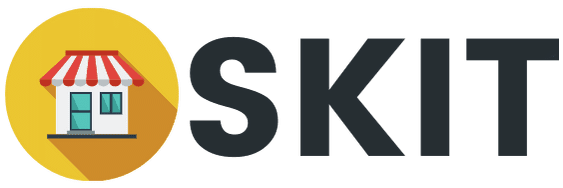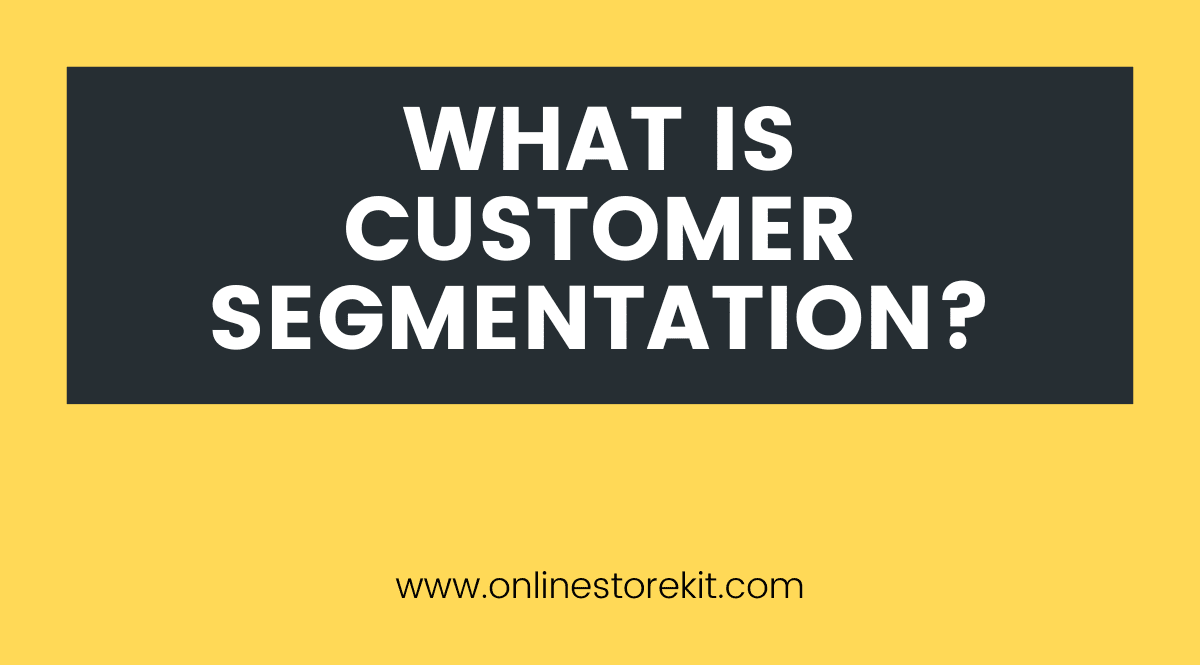How can businesses use customer segmentation to improve their marketing efforts?
Customer segmentation is a powerful tool for businesses to identify target markets and create customized marketing messages.
This article will provide an overview of what customer segmentation is, the types of customer segmentations, benefits and challenges, as well as best practices for implementing it.
Summary
Hide- Customer segmentation is a marketing strategy used to divide customers into distinct groups based on shared characteristics.
- It helps organizations target customers more effectively and deliver relevant messaging.
- Customer segmentation allows companies to gain a deeper understanding of their consumers.
- Implementing customer segmentation can lead to improved sales performance, better customer service, increased brand loyalty, and more effective targeting of potential new customers.
What is Customer Segmentation?
Customer segmentation is a marketing strategy used to divide customers into distinct groups based on shared characteristics.
It involves analyzing customer data and using it to create segment profiles, which outline the details of the segment such as age, gender, location, lifestyle and interests.
These segments are then targeted with specific promotional messages or products that appeal to their individual needs or preferences.
This approach allows businesses to focus their efforts on more profitable segments while also increasing brand loyalty and customer satisfaction.
Customer segmentation is an effective way to maximize resources, target new markets and optimize return on investment.
It requires careful analysis of customer data in order to develop meaningful segments that will have a positive impact on sales and profitability.
Furthermore, it must be done regularly in order for it to remain relevant and accurate.
Companies must also pay close attention to changes in the market in order to ensure that their segmentation strategies stay up-to-date with consumer trends.
Benefits of Customer Segmentation
Customer segmentation is a powerful tool that can provide organizations with the ability to target customers more effectively and deliver relevant messaging.
The practice of segmenting customers into distinct groups, based on their common traits and needs, can be extremely beneficial in helping organizations strategically focus their marketing efforts to create highly profitable targets.
Profitable Targeting
Targeting profitable customers can lead to increased revenue.
Customer segmentation helps organizations identify their most valuable customer segments, allowing them to focus their marketing efforts on the groups with the highest potential return.
Data driven marketing and predictive analytics are key elements in this process as they provide insights into customer behavior, buying patterns, and preferences.
| Data Driven Marketing | Predictive Analytics |
|---|---|
| Accurate decision-making | Identify likely outcomes |
| Optimize resources | Improve target accuracy |
| Improved ROI | Project future performance |
Relevant Messaging
Relevant messaging is essential for successful customer segmentation. It allows organizations to tailor their marketing messages to each target group.
Personalized marketing and targeted campaigns are key components of this process. They enable companies to create a unique message that resonates with the audience.
Companies should consider consumer preferences, behaviors, and needs when crafting their messages. This ensures maximum relevance.
Moreover, the use of data-driven insights can help inform what types of messaging will be most effective in reaching each customer segment.
Types of Customer Segmentation
Customer segmentation is a powerful tool for businesses that allows them to divide their customers into distinct groups based on their needs, attitudes, and behaviors.
This enables organizations to effectively identify the different types of customer segments they need to target and create tailored strategies for each segment.
Benefits of segmentation include improved sales performance, better customer service, increased brand loyalty among existing customers, and more effective targeting of potential new customers.
By understanding how segments differ from each other in terms of demographic characteristics or purchasing behavior, businesses can then develop more effective marketing campaigns and refine their product offerings for each targeted group.
Benefits of Segmentation
Segmenting customers can provide numerous advantages to businesses.
Generally speaking, customer segmentation allows companies to gain a deeper understanding of their consumers and to tailor products, services, and marketing efforts accordingly.
This can result in increased customer satisfaction, improved targeting of marketing campaigns, better resource allocation, and greater revenue growth.
Additionally, segmentation can lead to more personalization of services as well as loyalty programs that reward customers for repeat business.
Here are three main benefits of customer segmentation:
- Improved targeting: Companies can identify the needs and wants of their target audience more accurately.
- Increased relevance: Companies are able to create personalized messages that will resonate with specific segments of their audience based on the data gathered from segmentation research.
- Increased ROI: Customers who feel personally connected with a company or product are likely to be more loyal; this leads to increased return on investment for the company’s marketing efforts.
By effectively leveraging customer segmentation strategies, companies can gain valuable insights about their consumer base which will help them make informed decisions about how they market and deliver products and services.
This helps build loyalty among customers which leads to long-term success for businesses.
Transitioning into the next section about ‘identifying segments’, it is important for companies to understand who their ideal customers are before they begin an effective segmentation strategy.
Identifying Segments
Identifying customer segments involves the process of analyzing consumer behavior and preferences to understand their needs, wants, and motivations.
Companies use a variety of methods such as surveys, focus groups, interviews, and data analysis to identify which customer segments they should target.
Personalization is also important in segmentation. Companies strive to create targeted messages that are tailored to each segment’s unique wants and needs.
| Method | Advantages | Disadvantages |
|---|---|---|
| Surveys | Cost-effective | Limited information |
| Focus Groups | Generates insights quickly | Expensive for large samples |
| Interviews | Provides comprehensive data on customers’ opinions/behaviors | Time consuming & costly for larger samples |
| Data Analysis | Can identify patterns & trends in customer behavior quickly & cost-effectively | Can overlook certain aspects of customer behavior due to limitations in data collection methods or datasets used |
Targeting Strategies
Having identified segments, marketers can use their findings to create targeting strategies.
These strategies involve personalization efforts based on the characteristics of each segment.
Additionally, predictive analytics aids in understanding customer behavior and helps determine how they will react to certain campaigns or messages.
The following are some key strategies for targeting customers:
- Developing targeted communications – Tailor messages according to the needs of each particular segment.
- Customizing content – Create customized content that resonates with a specific group of people.
- Leveraging predictive analytics – Utilize data-driven insights to inform marketing decisions and develop personalized experiences for customers.
These strategies help ensure that customers receive relevant messages that are tailored to meet their individual needs and preferences.
By employing these tactics, businesses can drive better results and increase customer engagement.
This leads us into the next section about analyzing customer segmentation.
Analyzing Customer Segmentation
Analyzing customer segmentation involves leveraging data to better understand a target audience and identify key characteristics that can be used to create meaningful customer segments.
Predictive analytics, such as BDC segmentation, are often used to analyze large datasets in order to uncover patterns and trends that will help marketers refine their targeting strategies.
This process also helps businesses gain deeper insights into their customers’ buying behavior and preferences. By examining past purchases, marketing teams can use this data to predict consumer needs in the future.
Additionally, analyzing customer segmentation provides the necessary information needed for marketers to accurately determine which audiences should be targeted with specific products or services.
Through this type of analysis, companies can ensure proper allocation of resources and maximize return on investment from their marketing activities.
Finally, by understanding their customer’s buying habits and interests more clearly, businesses can offer more personalized experiences for each individual consumer.
This concludes a brief overview of analyzing customer segmentation; now it is time to explore how these insights can be implemented effectively into a company’s marketing strategy.
Implementing Customer Segmentation
Implementing customer segmentation insights into a company’s marketing strategy enables businesses to target specific audiences with tailored products or services.
To ensure successful implementation, businesses must take advantage of various aspects such as:
- Personalization – Ensuring that customers receive the most tailored and relevant experience in order to build loyalty and trust.
- Loyalty Programs – Setting up programs so customers can easily engage with the brand and become more loyal over time.
- Data Analysis – Analyzing key customer behavior patterns while continuously optimizing strategies to ensure better results.
The key is understanding how to create an effective segmentation program that takes into account both customer needs and business goals.
By doing this, companies can begin to customize their marketing approach for each targeted audience, which will ultimately lead to increased sales and profits.
Challenges of Customer Segmentation
Despite its potential benefits, customer segmentation can present certain challenges for businesses. One of the biggest difficulties is ensuring the accuracy of your segments.
Without accurate segmentation, marketing campaigns won’t be as effective and resources will be wasted.
To avoid this, businesses need to verify their data sources and refine their segmentation criteria regularly. Another challenge is avoiding targeting pitfalls when using customer segments to create marketing messages or product offers.
It’s important to remember that customers are not all the same and have different needs and preferences, so businesses should aim to create tailored offerings for each segment rather than a one-size-fits-all approach.
| Challenges | Description | Solutions |
|---|---|---|
| Segmentation Accuracy | Ensuring data sources are valid | Verify data sources regularly & refine criteria often |
| Targeting Pitfalls | Creating appropriate messages/offers for each segment | Create tailored offerings rather than a one-size-fits-all approach |
Best Practices for Customer Segmentation
To maximize the effectiveness of customer segmentation, businesses need to adhere to certain best practices. These include:
- Establishing segmenting strategies that are tailored to a company’s goals and customers. This requires an understanding of customer profiling techniques and data analytics.
- Utilizing feedback from customers and employees to gain insights into how well a segmentation strategy is working.
- Developing effective communication plans for each segment to ensure that targeted messages reach the right people in the right way.
Customer segmentation can be an invaluable tool for improving marketing results, but it must be done correctly in order to work effectively.
By following best practices, companies can ensure they are getting the most out of their efforts in this area and achieve better returns on their investments in customer segmentation initiatives.
Conclusion: Customer Segmentation Definition and Guide
Customer segmentation is a powerful tool that can provide insights into customer behavior, preferences, and needs.
By taking the time to properly analyze data and develop meaningful segments, businesses can gain valuable information that will help them better target their products and services.
It’s essential to remember that customer segmentation is an ongoing process; changes in the market necessitate regular review of current segments as well as the creation of new ones.
As a result, segmenting customers is like navigating a maze: it requires careful navigation in order to reach the desired outcome.





